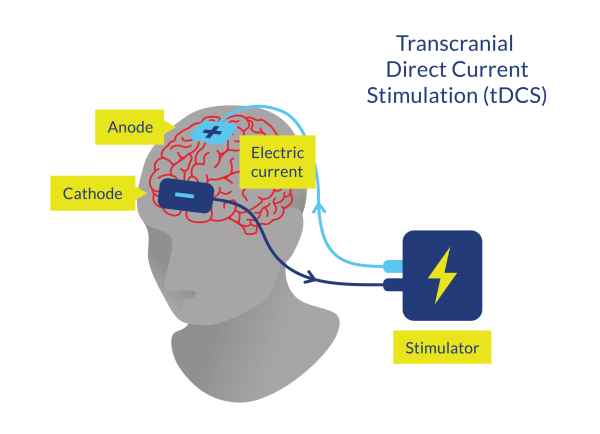Transcranial Direct Current Stimulation for Pain
Transcranial Direct Current Stimulation (tDCS) ability to relieve pain has been studied previously. However, it’s mechanism is still not completely understood. It is believed to play a role through its modulatory affect on the central pathways targeted by antidepressants (Knechtel et al. 2013).

Figure 1. Transcranial Direct Current Stimulation (tDCS)
Discussion
There is conflicting evidence for the effectiveness of tDCS in reducing pain post SCI. Three RCTs found treatment of tDCS did not reduce pain intensity compared to sham treatment (Choi et al. 2019; Li et al. 2018; Wrigley et al. 2013). But four RCTs found a significant reducing in pain intensity post intervention and at follow up compared to sham treatment (Fregni et al. 2006; Ngernyam et al. 2015; Thibault et al. 2017a; Thibault et al. 2017b). Evaluating of optimal frequency and dosage of treatment is warranted.
Soler and colleagues (2010) found that combined tDCS and visual illusion treatment resulted in significant reduction in pain compared to either treatment alone or placebo control. Secondary outcomes of quality of life, return to work, and sleep were also improved in the combined group.
Conclusion
There is level 1a evidence (from randomized controlled trials: Fregni et al. 2006; Ngernyan et al. 2015; Soler et al. 2010; Thibault et al. 2017a; Thibault et al. 2017b; Choi et al. 2019) for the benefits of transcranial direct current stimulation in reducing post-SCI pain.
There is level 1b evidence (Soler et al. 2010) for combined tDCS and visual illusion in improving post SCI pain.
